
Private Christopher Augustus Cox VC, was a British Army soldier and an English recipient of the Victoria Cross (VC) the highest and most prestigious award for gallantry in the face of the enemy that can be awarded to British and Commonwealth forces.

John Meikle was a Scottish recipient of the Victoria Cross, the highest and most prestigious award for valour in the face of the enemy that can be awarded to British and Commonwealth forces.
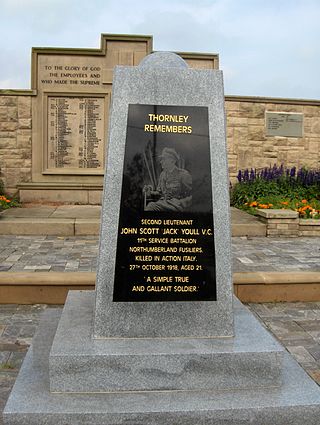
Second Lieutenant John Scott Youll VC was a British Army officer and an English recipient of the Victoria Cross (VC), the highest and most prestigious award for gallantry in the face of the enemy that can be awarded to British and Commonwealth forces.

Thomas Orde Lawder Wilkinson VC, was an English-born Canadian and British Army officer who was a recipient of the Victoria Cross (VC), the highest and most prestigious award for gallantry in the face of the enemy that can be awarded to British and Commonwealth forces. A soldier with the Loyal North Lancashire Regiment during the First World War, he was posthumously awarded the VC for his actions on 10 July 1916, during the Battle of the Somme.

Lieutenant Colonel Daniel Burges, VC, DSO was an English recipient of the Victoria Cross, the highest and most prestigious award for gallantry in the face of the enemy that can be awarded to British and Commonwealth forces.
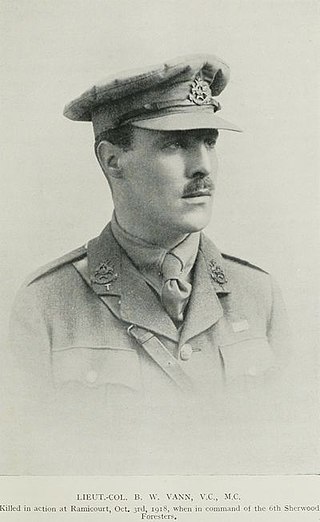
Lieutenant Colonel Bernard William Vann, was an English recipient of the Victoria Cross (VC), the highest and most prestigious award for gallantry in the face of the enemy that can be awarded to British and Commonwealth forces. Also an ordained priest, he was the only cleric of the Church of England to be awarded the VC in the First World War for his actions as a combatant.
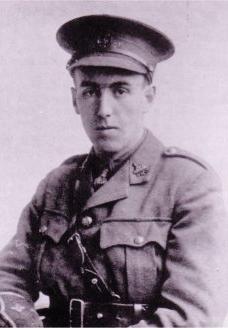
Angus Buchanan, was an English recipient of the Victoria Cross, the highest and most prestigious award for gallantry in the face of the enemy that can be awarded to British and Commonwealth forces.
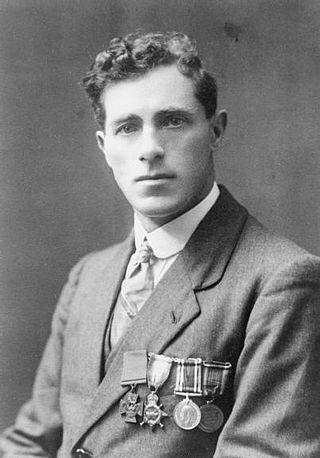
Horace Augustus Curtis VC was an English recipient of the Victoria Cross, the highest and most prestigious award for gallantry in the face of the enemy that can be awarded to British and Commonwealth forces.
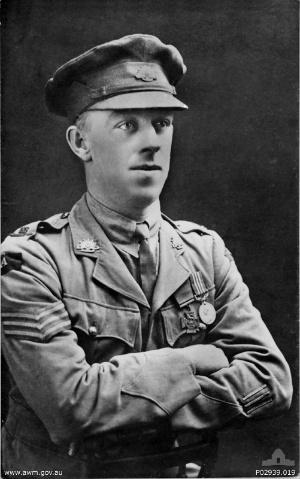
George Julian "Snowy" Howell, VC, MM was an Australian recipient of the Victoria Cross, the highest decoration for gallantry "in the face of the enemy" that can be awarded to members of the British and Commonwealth armed forces. Howell was decorated with the Victoria Cross following his actions during the Second Battle of Bullecourt, in which he ran along the parapet of a trench bombing the German forces attacking his position through the use of grenades, and thus driving them back.

Louis McGuffie VC was a Scottish recipient of the Victoria Cross, the highest and most prestigious award for gallantry in the face of the enemy that can be awarded to British and Commonwealth forces. He is a soldier with The King's Own Scottish Borderers. He was awarded the VC for his actions in late September 1918, during the Hundred Days Offensive of the First World War. He was killed in action a few days later.

Geoffrey St. George Shillington Cather was a recipient of the Victoria Cross, the highest and most prestigious award for gallantry in the face of the enemy that can be awarded to British and Commonwealth forces. A soldier with the Royal Irish Fusiliers during the First World War, he was posthumously awarded the VC for his actions on 1 July 1916, during the Battle of the Somme.

Captain Frederick William Hedges was a British recipient of the Victoria Cross, the highest and most prestigious award for gallantry in the face of the enemy that can be awarded to British and Commonwealth forces. A soldier with The Bedfordshire Regiment during the First World War, he was awarded the VC for his actions on 24 October 1918, during the Battle of the Selle.

Joseph Maxwell, was an Australian soldier, writer, and a recipient of the Victoria Cross, the highest decoration for gallantry "in the face of the enemy" that can be awarded to members of British and Commonwealth armed forces. Often described as Australia's second most decorated soldier of the First World War, he enlisted in the Australian Imperial Force on 8 February 1915, and served at Gallipoli before being transferred to the Western Front. In just over twelve months he was commissioned and decorated four times for his bravery.

James Ernest Newland, VC was an Australian soldier, policeman and a recipient of the Victoria Cross, the highest decoration for gallantry "in the face of the enemy" that can be awarded to members of the British and Commonwealth armed forces. Newland was awarded the Victoria Cross following three separate actions in April 1917, during attacks against German forces retreating to the Hindenburg Line. While in command of a company, Newland successfully led his men in several assaults on German positions and repulsed subsequent counter-attacks.
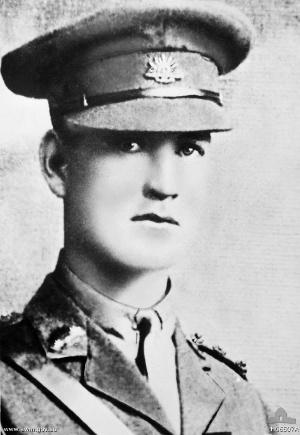
Percy Herbert Cherry, VC, MC was an Australian recipient of the Victoria Cross, the highest decoration for gallantry "in the face of the enemy" that can be awarded to members of the British and Commonwealth armed forces. The award was granted posthumously for Cherry's actions during an attack on the French village of Lagnicourt which was strongly defended by German forces.
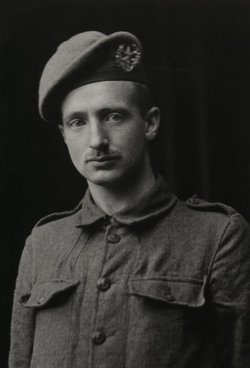
Serjeant John MacLaren Erskine VC was a British Army soldier and a Scottish recipient of the Victoria Cross (VC), the highest and most prestigious award for gallantry in the face of the enemy that can be awarded to British and Commonwealth forces.

Sergeant Thomas Edward Rendle VC was a British Army soldier and an English recipient of the Victoria Cross (VC), the highest and most prestigious award for gallantry in the face of the enemy that can be awarded to British and Commonwealth forces.

Major Stewart Walter Loudoun-Shand VC was a British recipient of the Victoria Cross (VC), the highest and most prestigious award for gallantry in the face of the enemy that can be awarded to British and Commonwealth forces. He was posthumously awarded the VC for his actions during an attack near the French village of Fricourt on the opening day of the Battle of the Somme.

Robert Quigg was an Irish recipient of the Victoria Cross, the highest and most prestigious award for gallantry in the face of the enemy that can be awarded to British and Commonwealth forces. The award was made for his actions during the Battle of the Somme in the First World War.

The Duke of Cornwall's Light Infantry (DCLI) was a light infantry regiment of the British Army in existence from 1881 to 1959.



















